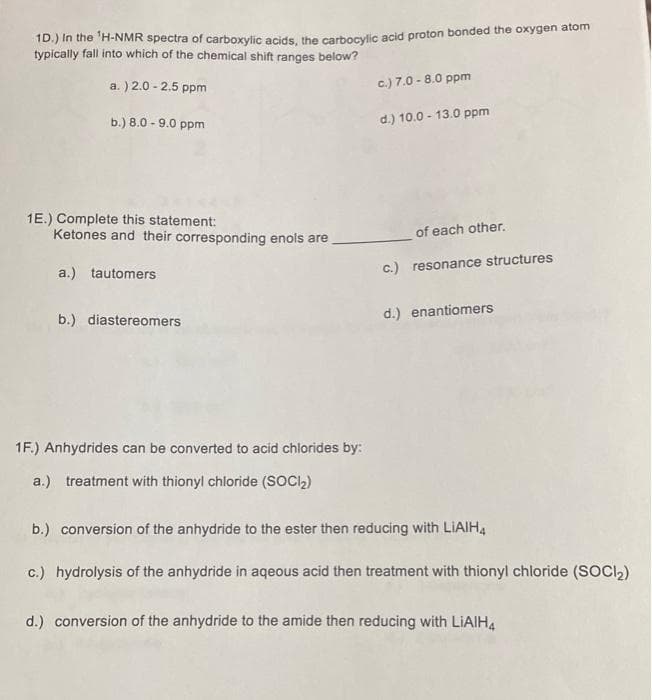1D.) In the ¹H-NMR spectra of carboxylic acids, the carbocylic acid proton bonded the oxygen atom typically fall into which of the chemical shift ranges below? a.) 2.0-2.5 ppm b.) 8.0-9.0 ppm 1E.) Complete this statement: Ketones and their corresponding enols are a.) tautomers b.) diastereomers 1F.) Anhydrides can be converted to acid chlorides by: c.) 7.0-8.0 ppm d.) 10.0-13.0 ppm of each other. c.) resonance structures d.) enantiomers
Carbohydrates
Carbohydrates are the organic compounds that are obtained in foods and living matters in the shape of sugars, cellulose, and starch. The general formula of carbohydrates is Cn(H2O)2. The ratio of H and O present in carbohydrates is identical to water.
Starch
Starch is a polysaccharide carbohydrate that belongs to the category of polysaccharide carbohydrates.
Mutarotation
The rotation of a particular structure of the chiral compound because of the epimerization is called mutarotation. It is the repercussion of the ring chain tautomerism. In terms of glucose, this can be defined as the modification in the equilibrium of the α- and β- glucose anomers upon its dissolution in the solvent water. This process is usually seen in the chemistry of carbohydrates.
L Sugar
A chemical compound that is represented with a molecular formula C6H12O6 is called L-(-) sugar. At the carbon’s 5th position, the hydroxyl group is placed to the compound’s left and therefore the sugar is represented as L(-)-sugar. It is capable of rotating the polarized light’s plane in the direction anticlockwise. L isomers are one of the 2 isomers formed by the configurational stereochemistry of the carbohydrates.

Step by step
Solved in 4 steps with 4 images


